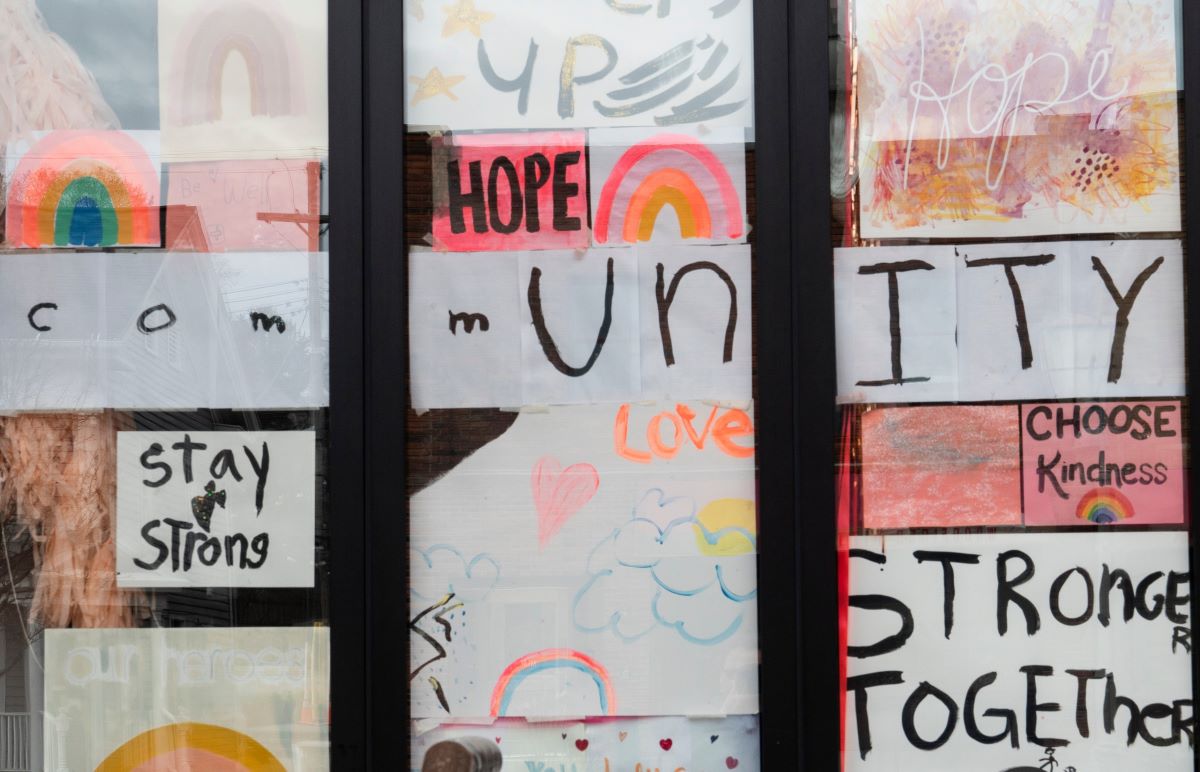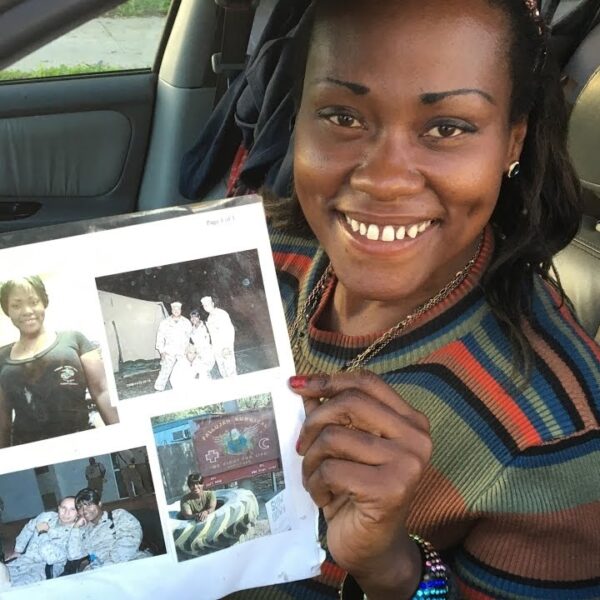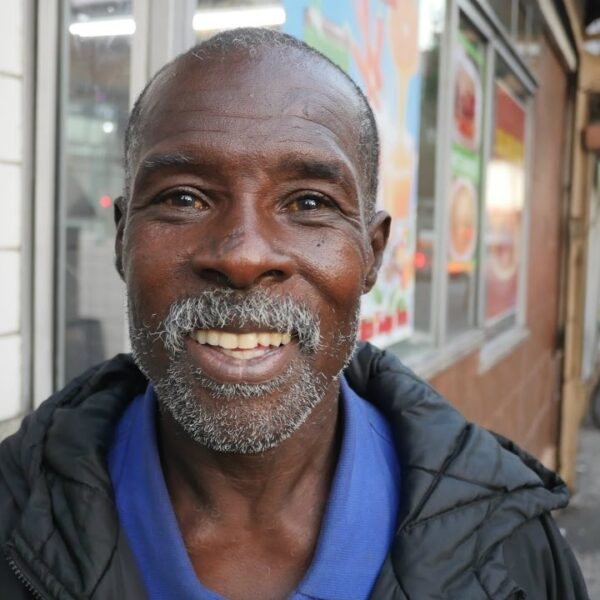If there’s one thing I’ve learned in the last year, it’s that a community is always stronger when we stand together. My hometown of Nashville has battled COVID, multiple tornados, flooding, and a suicide bomber this past year. A walk-through East Nashville uncovers dozens of murals and signs reading, “East Nashville Strong,” “Nashville Strong,” and “I believe in Nashville.”
Before the March 2020 tornado that left me without power for a week and unable to cook warm food, I didn’t know what those slogans really meant. I knew Nashville flooded badly in 2010, killing neighbors and destroying homes. But I wasn’t here then.
After the tornado, I accepted my first food handout from neighbors. I spent hours alongside strangers picking up debris and insulation, using tools lent by people standing on street corners, and eating food they brought us. I’d never experienced such a coming together.
As we faced what seemed like endless struggles for our neighborhood, we’ve continued to volunteer, clean up disaster areas, feed and care for each other. We are Nashville Strong.
These experiences taught me the value of mutual aid, and I wondered: How do we continue this momentum and make it permanent? What can other communities do to implement mutual aid in their regions?
So, I asked experts, researched mutual aid resources, and found the best ways to install the kind of mutual aid that affects three key areas of mutual aid:
- Preventing people from losing their homes
- Helping those who do not have homes
- Groups of people experiencing homelessness and helping one another
What is Mutual Aid?
The Cut published an article about mutual aid in 2020 in response to the massive economic and health problems COVID-19 created. The Cut wrote that “in mutual-aid systems, people work cooperatively to meet the needs of everyone in the community.
Mutual aid is different from charity because charity creates a one-way relationship between an organization giving to someone without reciprocal giving or work. In mutual aid, everyone works together to achieve a common goal.
19th-century anarchist Peter Kropotkin coined the term in his book “Mutual Aid: A Factor of Evolution” after witnessing animals work together for their common good in Siberia.
According to Bloomberg, “tens of thousands” of mutual aid networks were created in 2020 in response to the coronavirus pandemic. As lockdowns began across the country, organizer and abolitionist Mariame Kaba joined with Congresswoman Alexandria Ocasio-Cortez to create Mutual Aid 101, an online toolkit that helps and empowers people to build large and small mutual aid networks.
How each mutual aid group organizes volunteer work, finances and goals will vary between groups. And not all mutual aid groups have the same goals. You can create mutual aid groups for specific reasons, like preventing homelessness or assisting those without homes.
Using Mutual Aid to Prevent Homelessness
Mutual Aid 101 says the first step is finding a buddy or two in your neighborhood. Then define your zone – whether your apartment building, neighborhood, or region – and make a plan. The document also provides greetings for neighbors in three languages, additional learning resources, and step-by-step instructions for institutionalizing mutual aid networks.
In my building, we organized to secure rent relief in a very similar way and achieved a 33% rent reduction. Including myself, two people shared our petition, collecting hundreds of signatures and getting news coverage. I’d call that a success! While we didn’t win a full rent reduction, it was progress for people struggling economically.
Mutual aid helps your neighbors in big and small ways. Everyone can contribute to help prevent someone from losing their apartment, house, or other living situation.
Another Nashville mutual aid network raised and redistributed more than $6,000 to Vanderbilt University students. The goal was to provide food and help cover housing costs. One alumnus, Sara Starr, said this effort was significant for LGBTQ+ youth who couldn’t return home and were at a high risk of losing housing.
Austin, TX-based Do512 has examples of mutual aid networks that prevent homelessness. The group offers tips to help those who have lost their home.
“The mission of mutual aid is simple: to organize on a grassroots level and redistribute supplies and donations to those who need it,” Do512 said.
Mutual Aid 101, my own organizing experiences, Vanderbilt University’s and Do512’s tips all have one thing in common: Simply get started. Start by searching for mutual aid networks in your area that cover the needs you and your neighbors have. If you can’t find them, find a buddy or two and get started with grassroots organizing. You don’t have to be an expert—just driven to help!
Using Mutual Aid to Assist Those Experiencing Homelessness
Marla Bautista, author and creator of the Bautista Project, was once a homeless community member herself. Now located in Florida, Bautista said the organization is mutual aid that serves those without houses.
“We collaborate with local organizations in underserved communities to fill the gaps in services. Mutual aid is an opportunity for organizations to grow while fulfilling the needs of those they serve,” Bautista said.
Bautista said two things will increase housing security and prevent homelessness:
- providing direct resources to organizations with housing or voucher availability
- providing dedicated rental assistance for low or non-income-earning housed individuals
Community members can set up organizations for these purposes or fill in gaps when they hear of needs.
Other community members may want to create more permanent mutual aid networks to prevent homelessness. Bautista said research is essential to understand grants and sponsors specifically in your state. American Friends Service Committee also published a guide to creating or searching for existing mutual aid networks in your area that serve different communities, including those experiencing homelessness.
Using Mutual Aid in Groups of People Experiencing Homelessness
Although people experiencing homelessness have many struggles and may not have as many resources, there are many examples of how these communities have come together to assist each other. Recently, Invisible People covered the UCSF Center for Vulnerable Populations task force comprised of fellow homeless individuals. Their main goal was COVID-19 outreach. This seemingly small change made a massive difference in reducing the spread and increasing testing availability.
Health professionals quickly learned they were more successful with the help of people who are part of the community themselves.
Like the community formerly located at Echo Park Lake in Los Angeles, houseless communities have established community-building rules and activities. Before law enforcement cleared Echo Park Lake, community members cared for a community garden and organized to prevent harassment. When people new to homelessness arrived, the group offered food, a tent, and other supplies to get them started.
Even with fewer resources than someone who has housing, people experiencing homelessness can use Mutual Aid 101. They can decide upon goals and split responsibilities, such as cleaning or caretaking and redistribute money to their group. They can also seek out help from larger organizations if they’re able. Of course, there will be limitations caused by a lack of government documents or access to utilities and resources. But almost every step of Mutual Aid 101 can be followed by those without housing in a modified format.
While those experiencing homelessness shouldn’t be responsible for their plight and face many challenges, Kaba’s and Congresswoman Ocasio-Cortez’s document may provide a structure people can use to help themselves.
Bautista encourages all community members to get involved. She said any organization that helps those experiencing homelessness must also function as mutual aid.
“We cannot eliminate homelessness alone,” Bautista said. “It will take all of us, working together to eradicate homelessness and restore dignity to individuals beginning the journey back home.”













